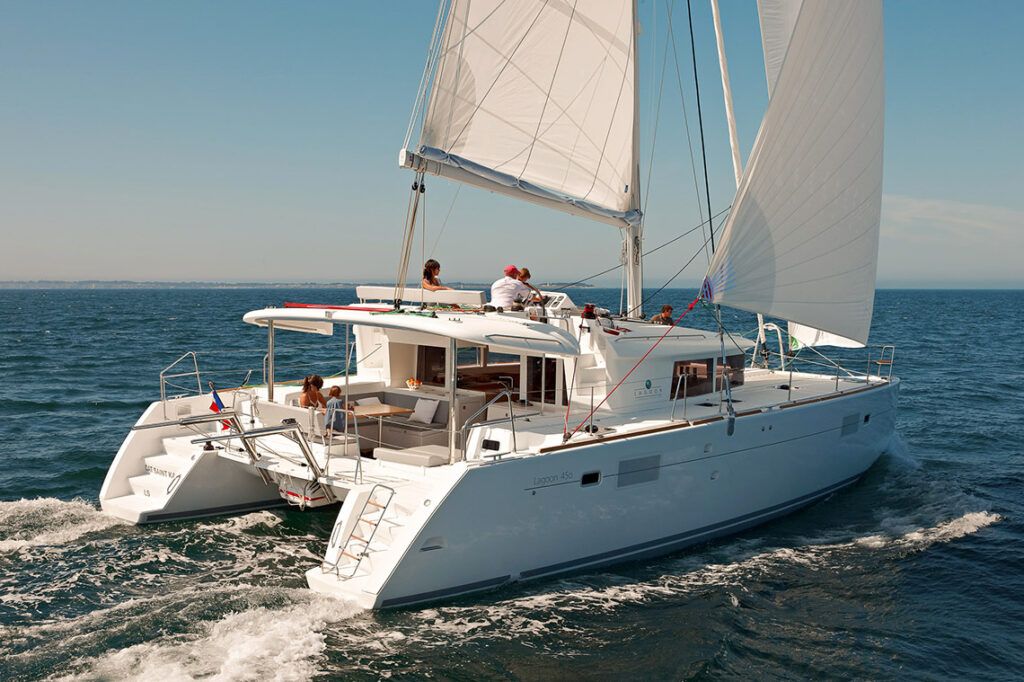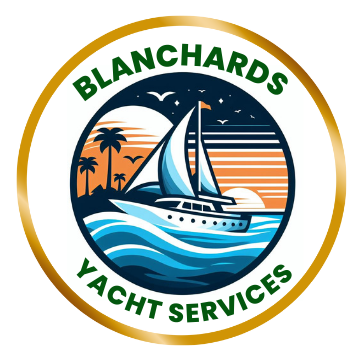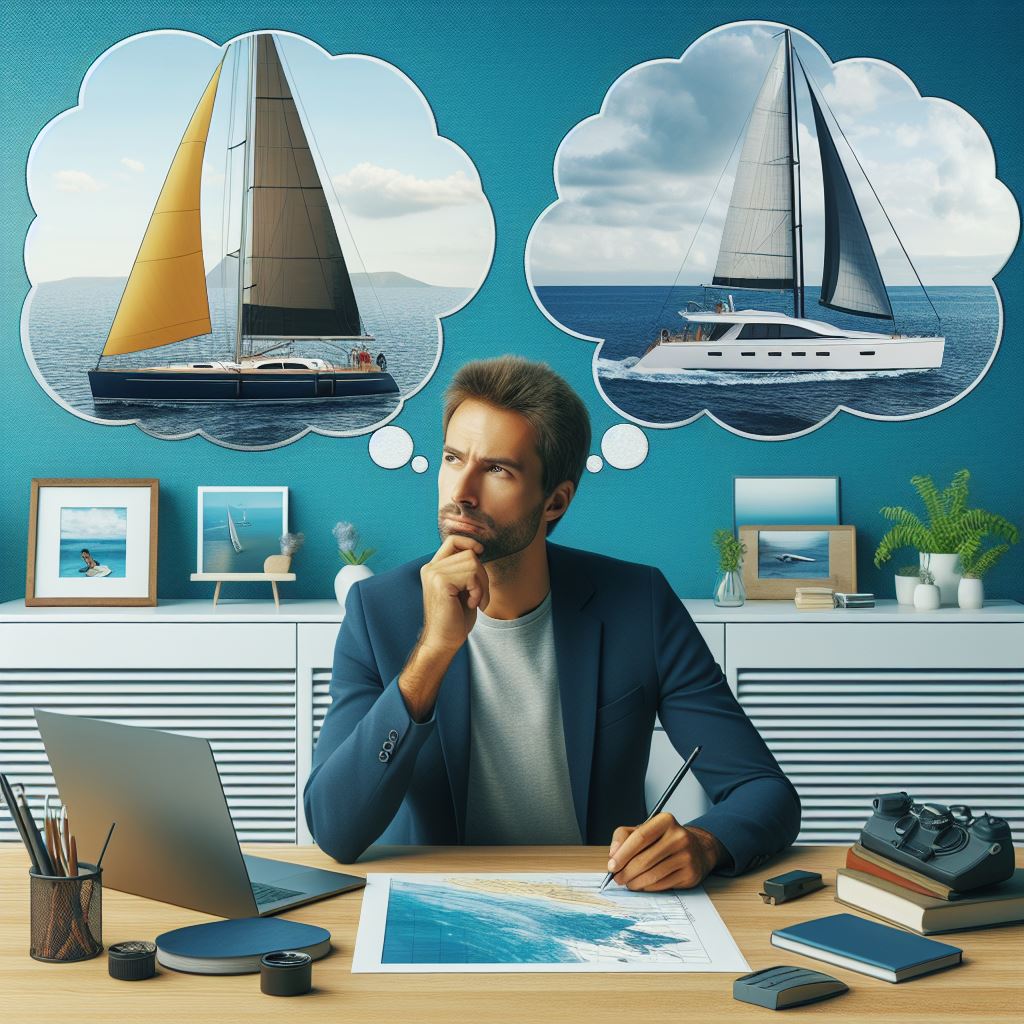I have done my fair share of navigating the open seas and have seen firsthand how the design of a vessel greatly influences its performance and the experience it offers. Sailboats, with their single hulls, slice through the water with a certain grace. Their streamlined bodies and deep keels are engineered for stability, making them reliable even when the sea shows its temper. Whether it is small and cozy or a grand yacht, each sailboat is crafted for a purpose, balancing size and function.

On the other side of the spectrum, catamarans stand out with their distinctive twin-hull design. Connected by a sturdy deck, these vessels owe their growing popularity to the unparalleled stability and roominess they provide. Catamarans are often the go-to choice for a relaxed cruise, with the capability to skim through shallower waters and the agility to pick up speed. Explorers who prefer coastlines and island hopping find their design especially advantageous.

Why do these differences matter? Well, for anyone considering a sailing adventure, it’s crucial to understand how the structural choices of each vessel type can affect your journey on the water. From how they move with the wind and waves, to the level of comfort you can expect on board, the difference lies in their design. This insight can help you decide whether the sleek dynamics of a sailboat or the steadiness of a catamaran align with your seafaring aspirations. It is worth your while understanding the performance and handling of each vessel, and their capacity for comfort and amenities as these factors are essential for anyone looking to choose the right type of vessel for their preferred sailing experience.
Charting the Sailing Experience: Performance to Comfort
Now, after exploring the structural nuances and design choices of sailboats and catamarans, it becomes clear that each offers a distinctive sailing experience shaped by those very features. Whenever I steer a traditional sailboat, I am reminded of the rewarding complexities this type of vessel presents. It’s about the art of Reading the Wind and waves, making sharp, considered maneuvers. Within the confines of a sailboat’s hull, space is often repurposed ingeniously to conserve every possible inch.
When considering whether to choose a sailboat or a catamaran for your sailing adventures, here are some key factors to keep in mind – Some Considerations apply for both Categories:
- Sailing Experience and Skill Level: Evaluate your sailing experience and skill level. Sailboats typically require more expertise to handle in certain conditions due to their single-hull design, while catamarans are generally easier to maneuver, making them suitable for beginners or less experienced sailors.
- Intended Use and Sailing Style: Determine your intended use and sailing style. Sailboats are versatile and well-suited for a wide range of sailing activities, including offshore passages, and racing. Catamarans excel in specific scenarios such as coastal cruising, Island Hopping, and leisure chartering due to their stability and spaciousness.
- Space and Comfort Requirements: Consider your space and comfort requirements. Catamarans offer more living space both above and below deck compared to sailboats, making them ideal for extended cruising or accommodating larger groups. Sailboats, on the other hand, may have cozier interiors but can still provide comfort for intimate sailing experiences.
- Budget and Maintenance Costs: Establish a realistic budget for purchasing and maintenance, considering not only the initial Purchase Price but also ongoing expenses such as mooring fees, insurance, maintenance, and repairs. Sailboats may have lower initial costs and simpler maintenance requirements, while catamarans often require more frequent maintenance due to their twin-hull design and additional systems. Choose a vessel that aligns with your financial means while still meeting your needs and preferences.
- Destination and Performance: Think about your intended sailing destinations and navigation requirements. Assess your preferences for performance and speed. While sailboats offer precise maneuverability and responsiveness to wind and waves, catamarans typically have shallower drafts and reduced resistance, allowing for higher speeds and access to shallower waters and coastal regions.
- Crew Size and Composition: Consider the size and composition of your crew. Catamarans can accommodate larger crew more comfortably due to their spacious layouts, while sailboats may be more suitable for smaller crew or solo sailors.
- Comfort and Amenities: Assess the onboard amenities and comfort features available for each category, including cabin layout, kitchen facilities, restroom provisions, and entertainment options. Opt for a vessel that aligns with your comfort preferences and desired level of luxury.
- Survey and Inspection: Before finalizing a purchase, conduct a thorough survey and inspection of the boat to assess its condition, structural integrity, and seaworthiness. Engage the services of a qualified marine surveyor or a Yacht Broker to identify any potential issues or deficiencies that may impact the vessel’s value or safety.
- Special Requirements: If you have specific needs or preferences, such as wheelchair accessibility, pet-friendly requirements, or dietary restrictions, take these into consideration when selecting the appropriate size boat.
- Resale Value and Market Demand: Research the resale value and market demand for both sailboats and catamarans in your area. Consider factors such as depreciation rates, popularity, and resale potential when making your decision.
- Weather Conditions: Be mindful of seasonal Weather Patterns and potential hazards in your chosen sailing area. Select a vessel equipped to handle prevailing winds, currents, and Weather Conditions to ensure safe passage throughout your journey.
Of course, sailboats can come in a diverse range of sizes and types. It is worth noting the existence of truly massive sailboats, often referred to as sailing superyachts or tall ships.
Concept Mega Sailing Yacht

These majestic vessels represent the pinnacle of sailing craftsmanship and engineering, boasting impressive dimensions and luxurious amenities. With towering masts and expansive sails, these giants of the sea evoke a sense of awe and admiration, capturing the imagination of sailors and enthusiasts worldwide.
The Philippe Starck-designed Sailing Yacht A is one of the most distinctive Sail Assisted yachts ever built. At 143m (470ft) long it features eight decks, and a 20m freeboard. It was built by Nobiskrug in Germany and launched in 2016.
The Nuvolari Lenard Oceanco designed Sailing Yacht Black Pearl has an overall length of 106,7 meters (350 ft). The beam is 15 meters (49,3 ft) and has a top speed of 15 knots.
The title of largest Sailing Yacht in the World goes to Jeff Bezos’ Sailing Yacht Koru which is a masterpiece of elegance and performance, renowned for its sleek design and luxurious accommodations. With a length of 127 meters and a beam of 16.8 meters, this stunning vessel offers ample space for relaxation and entertainment. The Sailing Yacht Koru delivers an unparalleled sailing experience and is meticulously crafted with attention to detail featuring state-of-the-art technology and amenities to ensure comfort and convenience from its spacious deck areas to its stylish interior. The Sailing Yacht Koru embodies the epitome of luxury sailing. Interestingly Sailing yacht Koru also travels with, in what has become a recent craze in the yachting industry, a 75-meter Support Vessel named ABOENA.
Of course, akin to their large sailboat counterparts, there exist notable catamarans of considerable size in the maritime domain.
Concept Mega Catamaran

These vessels, often referred to as “mega catamarans” or “giant catamarans,” include impressive scale and advanced design elements that set them apart as formidable contenders in the realm of modern seafaring.
Superyacht CHE is a luxury catamaran built by Sunreef in 2010. CHE is a Sunreef 114 model and the company’s second custom-made superyacht measuring 34,72m (113′ 11″) with a beam of 12,80m (42’) making her incredibly spacious. The yacht accommodates up to 8 charter guests and has a crew of 5.
Hemisphere is one of the largest sailing catamarans in the world measuring 145 feet (44 m) long and built by boat builder Pendennis (UK). The vessel has won five different industry awards, including for the interior finishing. In suitable weather Hemisphere goes 13 knots (24 km/h; 15 mph) with a top sailing speed of 20 knots.
However, the title of largest Catamaran goes to ”Asean Lady”. She has an overall length of 88.15 m (289 feet) and was built by Yantai Raffles from China, who launched Asean Lady in 2004. The superyacht has a beam of 21.2 m, a draught of 3.5 m and a volume of 2,385 GT.
At the end of the day sailing boats and catamarans represent two distinct paradigms in the world of sailing, each with its own allure and appeal.
Ultimately, what truly matters is the connection you seek with the ocean and where your maritime heart lies. Whether you choose the classic lines and heritage embodied by a sailboat, or the contemporary allure and comfort of a catamaran, the real magic is in the horizons you chase and the memories you create with wind-filled sails overhead.
**Our Website contains affiliate links. This means if you click and make a purchase, we may receive a small commission. Don’t worry, there is no extra cost to you. It’s a simple way you can support our mission to bring you quality content**.


Hey,
Your take on sailboats and catamarans is super interesting! It’s amazing how their designs create different sailing experiences. And Jeff Bezos’s yacht? Wow, what a beauty!
But hey, is it just me wondering if having a black flag is legal?
It’s always good to make sure everything’s shipshape (pun intended) when it comes to maritime laws!
Thanks for the article,
Cortes
Hi Cortes
I’m glad you found the discussion on sailboats and catamarans intriguing! Indeed, their unique designs offer diverse sailing experiences.
Regarding the black flag query, typically, black flags indicate certain conditions or intentions at sea, such as distress or race signals. However, their usage can vary based on context and location, so it’s prudent to ensure compliance with maritime regulations to avoid any legal entanglements.
Hey there,
Thank you for sharing this comprehensive guide on choosing between a sailing boat and a catamaran. For those interested in sailing, this article provides valuable insights and considerations to help make an informed decision. Whether it’s the stability and space offered by a catamaran or the traditional charm and performance of a sailing boat, the article explores the pros and cons of each option. Factors such as budget, sailing experience, and intended use are discussed, providing readers with a well-rounded understanding of the considerations involved.
Marios
Hello Marios
Many thanks for your feedback. I am happy that you enjoyed reading and thought it was informative.
This guide to sailboats versus catamarans offers an insightful overview of the world of sailing. As someone who loves cruising but is intrigued by the idea of exploring smaller vessels and the art of sailing, this article provided a valuable introduction to the differences between sailboats and catamarans.
I appreciate the detailed explanations of the structural nuances and design choices that influence the performance and experience of each vessel type. Learning about the unique sailing experiences they offer, from the rewarding complexities of maneuvering a sailboat to the relaxed cruising capabilities of a catamaran, gives me a better understanding of what to expect on the water.
Moreover, the guide’s considerations for factors like sailing experience, intended use, space and comfort requirements, and budget are helpful for someone like me who is new to the world of sailing. While the prospect of sailing on smaller ships can be daunting, especially when it comes to stability during storms, the article’s emphasis on safety and modern advancements reassures me that sailboats and catamarans are equipped to handle various conditions.
The descriptions of majestic vessels like the Sailing Yacht Koru and the Sailing Catamaran Che offer a glimpse into the world of luxury sailing, showcasing the impressive scale and advanced design elements of these remarkable ships.
Overall, this guide has sparked my curiosity and inspired me to delve deeper into the world of sailing. I look forward to learning more about sailing basics, exploring different types of vessels, and perhaps even embarking on my own maritime adventure someday.
Hi Heather
Many thanks for such a thorough and detailed feedback. Much appreciated.
Hello,
This comprehensive guide looks deeply into the world of sailing, offering a rich exploration of the distinctive characteristics and considerations between sailboats and catamarans. From the elegant grace of single-hulled sailboats to the spacious stability of twin-hulled catamarans, the article meticulously examines every facet of these vessels, empowering people like me to make informed decisions based on their sailing aspirations and preferences.
Your firsthand experience navigating the open seas lends authenticity and insight to the discussion, framing the debate within the context of practical seafaring knowledge. By highlighting key factors such as sailing experience, intended use, comfort requirements and budget considerations, the guide equips readers with a comprehensive framework for evaluating their options.
High Starlight
Many thanks for your thorough feedback. I am happy you enjoyed the article
For individuals wishing to buy or hire a boat, Blanchard’s Yacht Services’ guide contrasting sailing boats and catamarans is a great resource. It provides a thorough analysis of the two kinds, stressing the advantages and disadvantages, which is quite helpful in helping you make a decision.
How do sailing boats and catamarans differ in terms of handling and maintenance costs? This knowledge may have a big impact on the choices made by those who are thinking about buying either kind of boat.
Hi Kiersti
Thank you for your feedback! I’m glad you found our guide on sailing boats and catamarans helpful.
In terms of handling, sailing boats typically require more skill and experience to maneuver due to their single hull design, whereas catamarans offer greater stability and easier handling, making them more suitable for beginners.
Regarding maintenance costs, catamarans often require more frequent maintenance due to having two hulls, more complex rigging, and additional systems, which can result in higher upkeep expenses compared to sailing boats. Understanding these differences can indeed be crucial for individuals considering buying either type of vessel.
Hey there, stumbled upon your awesome guide on sailing boats vs. catamarans over at Blanchard’s Yacht Services, and I’ve got to say, it’s a real gem! Your breakdown of the pros and cons for both types of vessels was super helpful for a newbie like me who’s just dipping their toes into the sailing world. I especially appreciated how you highlighted the differences in handling, stability, and space – really gave me a clear picture of what to expect.
Your explanation about the trade-offs between speed and comfort depending on the type of boat was eye-opening! It got me thinking: How do you decide which is more important, especially for someone like me who’s torn between the thrill of speed and the allure of a leisurely cruise? Also, loved your tips on maintenance – so practical and down-to-earth. Any other maintenance hacks you’d recommend for someone looking to keep their boat shipshape without breaking the bank? Thanks for the fantastic read, looking forward to more insights from you!
Hey Bob
Thank you so much for your kind words and enthusiasm about the sailing boats vs. catamarans guide! I’m thrilled to hear that it provided valuable insights as you venture into the sailing world.
Deciding between speed and comfort can indeed be a tough choice, and it often boils down to personal preferences and intended use. For some, the adrenaline rush of speed is irresistible, while others prioritize the relaxation and stability of a leisurely cruise.
Considering factors like your sailing goals, preferred destinations, and who will be joining you aboard can help guide this decision. As for maintenance, I’m glad you found the tips helpful! In addition to regular upkeep, simple practices like rinsing with fresh water after each use, investing in quality marine-grade products, and learning basic DIY repairs can go a long way in preserving your vessel without breaking the bank.
Wishing you smooth sailing ahead, and I’m excited to share more insights with you in the future!